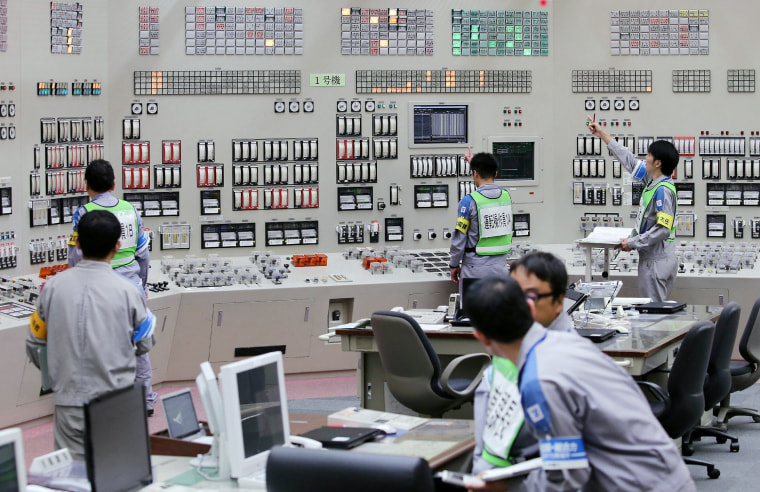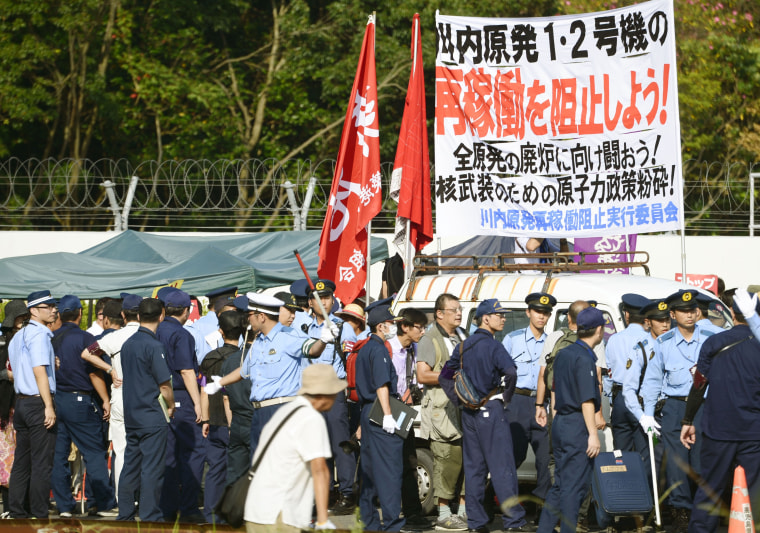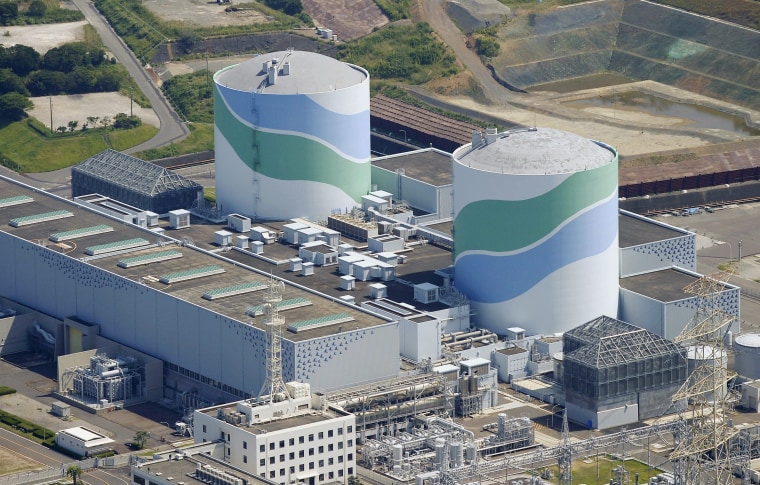TOKYO — Japan restarted a nuclear reactor Tuesday for the first time since new rules were introduced in the wake of the 2011 Fukushima meltdown.
The reactor at the Sendai Nuclear Power Plant was one of 43 taken offline and forced to pass what Japanese Prime Minister Shinzo Abe called "the world's most stringent guidelines" in the wake of the disaster.

The meltdown was triggered by a devastating earthquake and tsunami that killed some 16,000 people. It prompted a debate about the safety of nuclear emergency in the resource-scarce country.
The firm said that as early as Friday they would be able to supply electricity from the plant, which is in the southern city of Satsumasendai. While the Oi Nuclear Power Plant was briefly brought back online to solve a power shortage in 2012, Sendai is the only reactor in the country that has been restarted on a permanent basis having passed the new regulations.
The new safety guidelines include mandatory backup power, a lesson learned from Fukushima, where the tsunami knocked out the cooling system inside the reactor and triggered multiple meltdowns.
Before Fukushima, 30 percent of Japan’s energy came from nuclear power. Idling all its reactors pending safety checks has cost the country the equivalent of $80 billion in fossil fuel imports to fill the gap.
A poll by Japan's Kyodo News Agency in July found more than 56 percent of people were against the restart, while fewer than 35 percent approved.

This sentiment manifested itself in a protest outside the reactor on Tuesday. Naoto Kan, prime minister at the time of the Fukushima crisis, was among the demonstrators.
He told fellow protesters that it had been "completely proven … that nuclear energy is the most expensive and most dangerous," adding: "Why is Kyushu Electric restarting the reactor at Sendai?"
Kan blamed the decision on short-term thinking. "They’re only thinking of the now, thinking of the money, saying to themselves, 'While I’m president of the company there’s isn’t going to be another huge earthquake' … it's the same with the bureaucrats," he said.
The government has vowed to lower its nuclear dependency to around 20 percent by 2030. But Yoichi Miyazawa, the minister in charge of the nation’s nuclear policy, told a press conference Tuesday restarting Japan's reactors was "vital for our energy security, our economy, and for our efforts in dealing with global warming."
